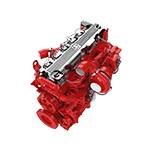Sep . 05, 2024 15:07 Back to list
how to check brake drums
How to Check Brake Drums A Comprehensive Guide
Brake drums are a crucial component of your vehicle's braking system, especially in vehicles equipped with drum brakes. Over time, these drums can wear out, leading to decreased braking performance and potential safety hazards. Regular inspection and maintenance of brake drums are essential for safe driving. Here’s a step-by-step guide on how to check brake drums effectively.
Step 1 Gather Necessary Tools
Before you begin, make sure you have the right tools. You will need - A jack and jack stands - Lug wrench - Brake cleaner - A dial indicator or caliper (for measuring wear) - A flashlight
Step 2 Lift the Vehicle
Start by parking your vehicle on a flat surface and engaging the parking brake. Loosen the lug nuts slightly before raising the vehicle with a jack. Once elevated, securely support it with jack stands. Remove the lug nuts completely and take off the wheel to access the brake drum.
Step 3 Inspect the Brake Drum Externally
With the wheel removed, visually inspect the brake drum. Look for any noticeable cracks, deep grooves, or scoring on the surface. These imperfections can hinder the drum's effectiveness and could indicate wear that necessitates replacement.
Step 4 Measure the Drum’s Inside Diameter
how to check brake drums

Using a dial indicator or caliper, measure the inside diameter of the brake drum. Compare this measurement with your vehicle's specifications, typically found in the owner’s manual or a reliable repair guide. If the diameter exceeds the manufacturer’s limits, the drum may need to be replaced.
Step 5 Check for Warping
To check for warping, spin the drum by hand while observing the brake shoes. If you notice any unevenness or if the drum wobbles, it's an indication of warping that can lead to brake imbalance and reduced performance. If the drum shows signs of warping, it's time for a replacement.
Step 6 Examine Brake Shoes
While you’re at it, inspect the brake shoes for wear. The friction material should be thick enough to enable effective braking. If it's worn down to the metal, it’s crucial to replace the shoes at the same time as the drums.
Step 7 Clean and Reassemble
After your inspection, clean the brake drum with brake cleaner to remove dust and debris. Ensure all components are dry before reassembly. Reattach the drum, wheel, and lug nuts. Lower the vehicle, and don’t forget to torque the lug nuts to the manufacturer's specifications.
Conclusion
Checking brake drums is a straightforward process that can significantly contribute to your vehicle’s safety. Regular inspections can help you catch problems early, ensuring reliable braking performance. If you notice any irregularities or if you're unsure, it's always best to consult with a professional mechanic for further evaluation and service. Safety should always be your top priority on the road.
-
Brake Drum Liza Durable Drum Brake Components & Replacement Parts
NewsMay.21,2025
-
Kamaz Brake Drum - Durable OEM Replacement & Heavy-Duty Performance
NewsMay.21,2025
-
Brake Drum Liza - High-Quality & Durable Braking Solutions
NewsMay.21,2025
-
IVECO Brake Drums Durable OEM Replacement & Brake Drum Components
NewsMay.20,2025
-
Brake Drum Liza Durable & High-Performance Braking Solutions
NewsMay.20,2025
-
Brake Drum Liza High-Quality Drum Brake & Shoe Kits for Vehicles
NewsMay.19,2025
